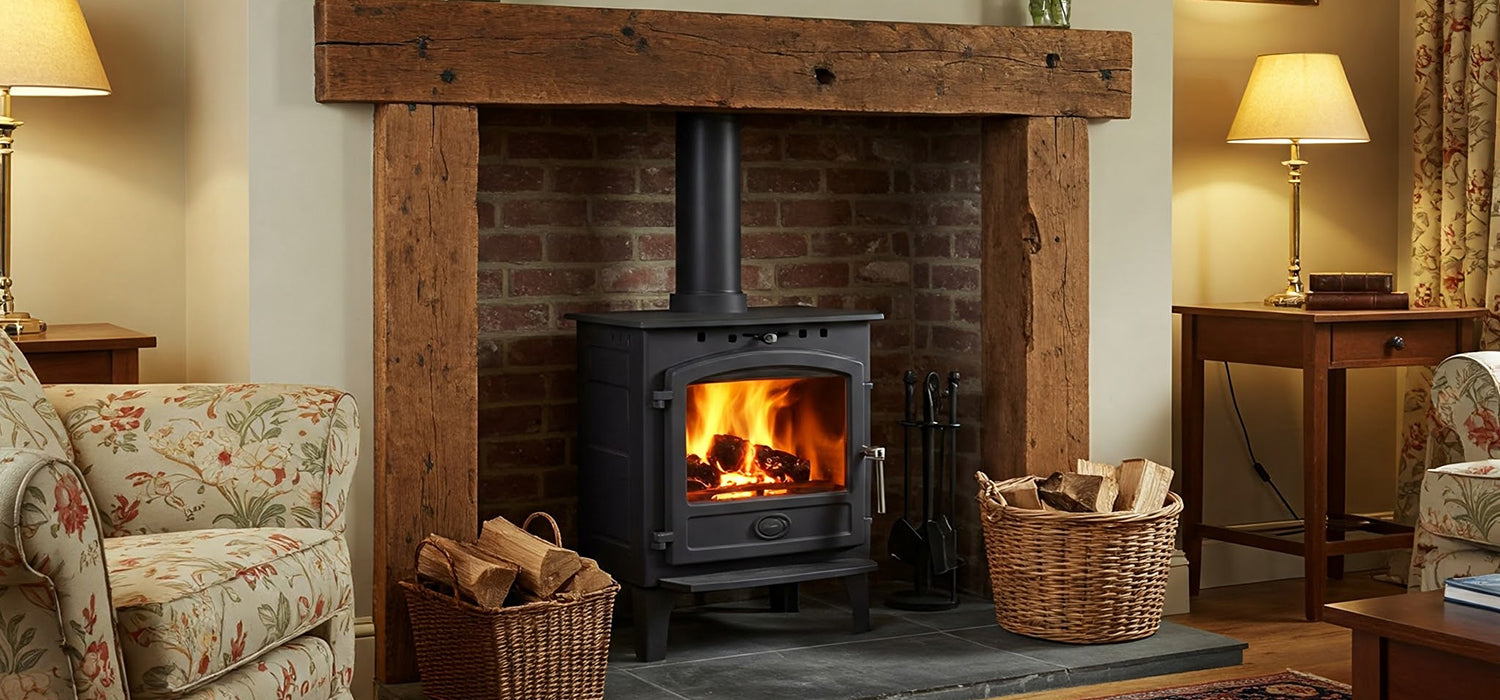
Why Does My Log Burner Keep Smoking? Common Causes & Fixes
Ever lit your Log Burner, only to feel like you’ve invited a fog machine indoors? The short answer: your stove smokes because of damp wood, poor draught, or chimney troubles. Keep reading to uncover the quirks, fixes, and secrets for a cleaner, cosier fire.
A Deeper Dive: Why Your Log Burner Continues to Smoke
Lighting a fire should be a comforting ritual — a crackle of kindling, a glow in the grate, and that first wave of heat filling the room. But sometimes, instead of a cosy evening, you end up waving your arms through a cloud of smoke.
Why does it happen? In most cases, the answer lies with your chimney, air supply, or the way your stove has been set up. Think of your log burner as a living thing: it needs air to breathe, a clear path to exhale, and the right fuel to thrive.
When one of those things is off balance, smoke ends up indoors. Let’s dig into the most common culprits.
Is Your Chimney Underperforming?
Your chimney is the unsung hero of the log burner world. Its whole job is to whisk smoke away quickly and cleanly. When it’s underperforming, the results are painfully obvious — a smoky lounge and a fire that just won’t behave.
There are two major reasons your chimney might not be pulling its weight.
A Blocked Flue
Imagine trying to breathe through a straw filled with cotton wool. That’s how your stove feels when the flue is blocked. Creosote build-up, soot, fallen debris or even a bird’s nest can choke the airflow.
One customer I spoke to recently thought their stove was faulty, only to discover a stubborn pigeon had built its summer home inside the chimney pot. A simple sweep sorted the problem instantly.
That’s why regular chimney sweeping isn’t just tradition — it’s essential.
Negative Pressure in the Room
This one’s sneaky. In older homes, draughts slip in through gaps and keep air moving. But modern homes are sealed up tight with insulation and double glazing. That’s great for your heating bill, but it starves your stove of oxygen.
When the room is under negative pressure, the chimney can’t draw properly. Instead of smoke going up, it rolls back down and into your living space.
The quick test? Crack open a window while the stove is running. If the smoke clears, you’ve found the culprit. A permanent fix may mean installing an air vent in the room.
Are Your Air Vents to Blame?
Air vents are like the lungs of your stove. Open, they feed the fire and allow smoke to be drawn away. Closed or poorly adjusted, they smother the flames and trap smoke inside.
Think of lighting a fire like training a pet. At first, you need to give it plenty of freedom to get it going — vents wide open, wood stacked for airflow. Once it’s settled, you can calm things down by adjusting the controls.
Close the vents too early though, and you’ll snuff out the flames, leaving a smoky mess. It’s a balancing act, and once you get the hang of it, you’ll notice a dramatic improvement.
Advanced Troubleshooting for a Stubborn Problem
So, you’ve tried better wood, swept the chimney, fiddled with vents, and you’re still coughing through the haze? Time to get technical.
The "Paper Test" for Chimney Draw
Here’s an old trick that works wonders. Roll up a sheet of newspaper, light it, and hold it near the flue opening (with the stove door open). Watch which way the smoke goes.
If it shoots upwards, your chimney’s doing its job. If it drifts back into the room, you’ve got a draught issue. This test costs nothing, takes seconds, and often gives you the confidence to know whether the problem lies with your chimney or elsewhere.
I’ve seen homeowners shocked by how clearly the test shows the problem — smoke curling stubbornly into the room like a ghost that won’t leave.
When it’s a Deeper Structural Issue
Sometimes, no amount of tweaking or sweeping will help. If the stove was poorly installed, the problem is baked in.
A chimney that’s too short won’t pull strongly enough. A flue that’s the wrong diameter can choke airflow. Poorly sealed joints may let air escape in all the wrong places.
These aren’t the sort of problems you can fix with DIY tinkering. At this stage, it’s best to call in a certified installer or chimney sweep. Yes, it might cost a little upfront — but compared to years of smoke-filled evenings, it’s money well spent.
The Long-Term Solution for a Smoke-Free Burn
The good news is that most smoke issues are preventable. A smoke-free log burner isn’t a mystery — it’s simply the result of good habits and regular maintenance.
Start with your fuel. Use seasoned hardwood, dried for at least 12–18 months, with a moisture content below 20%. Anything wetter than that and you’re basically boiling water instead of burning wood. That’s why wet logs hiss and spit, and why the smoke looks thick and white.
Next, keep up with chimney care. If you use your stove daily in winter, get it swept every year. If you only light it occasionally, once every couple of years might be enough. Always hire a professional sweep — they know how to spot early signs of damage as well as clear out soot.
Finally, learn to love airflow. Think about your vents, your windows, and the general movement of air in your home. The right airflow transforms your stove from a smoky nuisance into a steady, efficient heater.
Lighting a log burner should be one of life’s simple pleasures. The flicker of flames, the warmth on your face, and the comfort of knowing your home is heated in the cosiest way possible.
If your log burner has been acting more like a smoke machine, don’t give up. With the right knowledge, a few checks, and perhaps a professional eye, you can get back to evenings where the only thing filling the room is warmth.
After all, a good fire should make memories — not smoke alarms go off.
Other content we think you'll love
- What Are the New Log Burner Rules in the UK?
- Why Your Log Burner is Smoking: Causes, Fixes, and Safety Tips
- Why Does My Log Burner Smell?
- Why Your Log Burner Is Burning Too Fast (And How to Fix It)
- Why Your Log Burner Won’t Stay Lit (and How to Fix It)
- Why Is My Log Burner Smoking? Causes, Fixes & Prevention
- Can You Safely Put a TV Above a Log Burner?
- Keeping Your Baby Safe Around Log Burners
- Can You Safely Install a Log Burner Near Glass?
- Why Your Fireplace Smells Like Burning Plastic (and What to Do About It)
- Log Burner Carbon Monoxide: Stay Safe from the Silent Killer
- Log Burner Law UK: The Complete Guide for Homeowners

